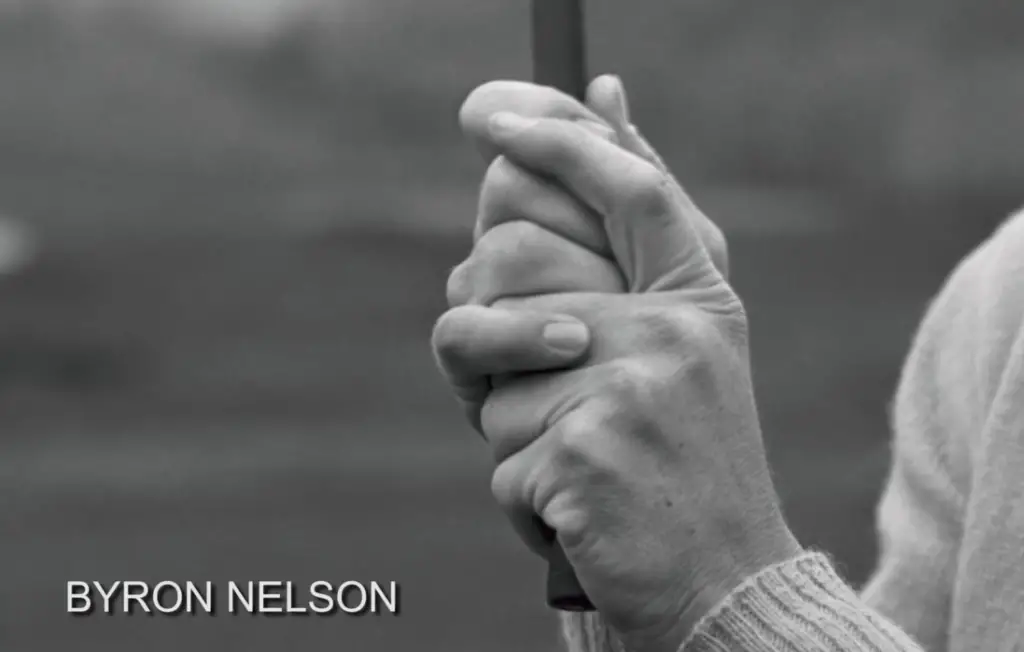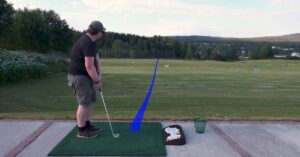How To Swing A Golf Club? Mastering the Perfect Golf Swing
Golf is a popular sport enjoyed by people of all ages, but it can be intimidating for those who have never played before. One of the essential golf skills is the swing, and it’s important to get it right to hit the ball accurately and with power.
In this blog post, we will walk you through the steps to swing a golf club and provide tips on improving your swing.
Whether you’re a beginner looking to learn the fundamentals or an experienced golfer looking to fine-tune your technique, this guide will help you master the art of the golf swing.
The Fundamentals of Golf club Swing
A good swing can lead to better accuracy and distance, while a poor swing can result in frustration on the course. If you’re just starting out or looking to improve your game, here are the basics you may need to remember.
Grip

The way you hold the club is important for control and accuracy. A good grip lets you rotate your forearms properly and hit the ball with a square clubface.
To grip the club correctly, place your left hand on the handle with your palm facing the target and your right hand under the handle with your palm facing your body.
Make sure your thumbs are wrapped around the handle and pointing down the shaft.
Stance
Your stance should be comfortable and balanced, with your feet shoulder-width apart and your weight evenly distributed.
Stand with your feet pointing slightly outward, and bend your knees slightly to lower your center of gravity.
Backswing

You should turn your shoulders and hips on the backswing while keeping your arms straight. The club should be taken back in a smooth, fluid motion.
As you turn your shoulders, allow your arms to lift the club upwards and away from the ball. Your backswing should be about shoulder height.
Downswing

As you start the downswing, shift your weight to your front foot and turn your hips and shoulders towards the target. Bring the club down and make contact with the ball.
Your downswing should be smooth and controlled, with your arms and body working together to generate power.
Follow-through
After hitting the ball, continue the swing and follow through with a full-shoulder turn. This helps ensure you generate enough power and control to hit the ball accurately.
As you follow through, your left shoulder should be facing the target, and your right foot should be pointing toward the ground.
How to Swing a Golf Club Properly?

By now, you know some basics of golf club swing. Now let’s dive directly into the main process. To swing a golf club, follow these steps:
- Stand with your feet shoulder-width apart, and your knees slightly bent.
- Grip the club with your dominant hand below the other hand.
- Take a deep breath and relax your arms and shoulders.
- Begin the backswing by turning your hips and shoulders away from the target.
- As you continue the backswing, allow your arms to rise as you turn your shoulders naturally.
- When the club reaches the top of your backswing, pause for a moment before beginning the downswing.
- Begin the downswing by turning your hips and shoulders back towards the target.
- Straighten your arms and bring the clubhead down towards the ball as you come down.
- Follow through by turning your hips and shoulders towards the target and allowing your arms to extend out naturally.
Remember to keep your head still and your eyes focused on the ball throughout the swing. It may take some practice to get the swing just right, but with time and practice, you’ll be hitting the ball with ease.
Some Advanced Golf Swing Techniques
There are many advanced techniques that golfers can use to improve their swing. Some common techniques include:
Stack and tilt swing
This swing technique involves shifting your weight forward onto your front foot and tilting your spine to the right (for right-handed golfers). This can help you generate more power and control your shot shape.
One-plane swing
This swing technique involves keeping your arms and club on a single plane throughout the swing.
Rather than having the club drop down on the backswing and re-approach the ball on a different plane. This can help you maintain a consistent swing and hit straighter shots.
Pivot swing
This swing technique involves pivoting around your spine and maintaining your balance throughout the swing. This can help you generate more power and control your shot shape.
Tempo swing
This swing technique involves maintaining a consistent tempo, or rhythm, throughout the swing. This can help you generate more power and control your shot shape.
Release swing
This swing technique involves releasing the clubhead through the impact zone with a quick wrist action. This can help you generate more power and control your shot shape.
It’s important to note that there is no one “perfect” swing technique that works for every golfer. It’s important to find a swing technique that works best for your body type, skill level, and personal preferences.
8 Common mistakes to avoid in the golf swing

Here are some more specific mistakes that golfers may make in their swing and ways to correct them:
#1- Swaying
Swaying is when the golfer moves their body horizontally during the swing. To correct this, try to keep the lower body still and maintain balance by shifting your weight to the front foot on the backswing and to the back foot on the downswing.
#2- Lifting the head
Lifting the head up during the swing can cause the golfer to lose their aim and hit the ball poorly. To correct this, try to keep your head down and your eyes on the ball until the swing is completed.
#3- Sliding
Sliding is when the golfer moves their hips or feet during the swing. To correct this, try to keep your feet planted and maintain your balance throughout the swing.
#4- Over-swinging
Over-swinging is when the golfer takes the club back too far on the backswing. This can cause the golfer to lose control and accuracy on the shot.
To correct this, try to keep your swing within your comfort level and practice a smooth, controlled swing.
#5- Improper grip
An improper grip on the club can cause the golfer to lose control and accuracy.
To correct this, ensure that your grip is firm but not too tight and that your hands are placed correctly on the club.
#6- Improper posture
Poor posture can cause the golfer to lose power and control. To correct this, try to stand up straight with your shoulders relaxed and feet shoulder-width apart.
#7- Hurrying
Rushing the swing can cause the golfer to lose control and accuracy. Try to take your time and make a smooth, controlled swing to correct this.
#8- Improper alignment
Incorrect alignment can cause the golfer to hit the ball off-course. To correct this, ensure your body is properly aligned with the target before you swing.
Tips for improving your golf swing

Several tips can help you improve your golf swing. Here are a few:
- Practice regularly: The more you practice, the more comfortable you’ll become with your swing. Try to practice at least once a week, if not more.
- Get a lesson: A professional golf instructor can analyze your swing and provide personalized feedback and drills to help you improve.
- Work on your grip: Your grip is the foundation of your swing. Make sure you have a firm yet relaxed grip on the club.
- Focus on your posture: Good posture is important for a consistent swing. Make sure you’re standing tall and keeping your weight balanced.
- Ensure you’re using the correct clubs: Using the wrong clubs can throw off your swing. Make sure you’re using clubs that are properly fitted for your height and strength.
- Use a slow and smooth tempo: A smooth, controlled swing will lead to more consistent shots. Try to maintain a steady tempo throughout your swing.
- Don’t grip the club too tightly: A tight grip can lead to tension in your arms and shoulders, negatively affecting your swing.
- Use visualization: Visualizing a good swing can help you replicate it on the course. Close your eyes and imagine yourself making a perfect swing.
FAQs
So far, we have covered the main aspects of golf club swing, but there are still some queries that beginners golfers often ask. Have a quick look a the short answers.
How much space to swing a golf club?
The amount of space you need to swing a golf club will depend on the type of club you are using and the shot you are trying to hit.
In general, you will need more space to swing a longer club, such as a driver, than a shorter club, such as a wedge.
How do I choose the right swing golf club for my game?
The best swing golf club for you will depend on your skill level, swing speed, and the type of shot you are trying to hit.
It’s a good idea to try out a few different clubs and see which ones feel the most comfortable and give you the best results.
You can also consult with a golf professional or club fitting specialist to find the right clubs for your game.
How do I hit a fade with a swing golf club?
A fade is a shot that curves gently to the left (for a right-handed golfer). Aim slightly to the right of your target to hit a fade, and use an open clubface at impact.
You can also use a weaker grip and focus on releasing the clubhead through impact to create more spin and fade.
How do I hit a draw with a swing golf club?
A draw is a shot that curves gently to the right (for a right-handed golfer). Aim slightly to the left of your target to hit a draw and use a closed clubface at impact.
You can also use a stronger grip and focus on keeping the clubface closed through impact to create more spin and draw.
Can I use my swing golf clubs on any type of terrain?
Not necessarily. Different swing golf clubs are designed for different types of terrain and grass.
For example, a sand wedge is specifically designed for shots out of bunkers, while a lob wedge is designed for shots from tight or uneven lines.
Choosing the right club for the shot you are trying to hit, and the conditions you are playing in is important.
How often should I replace my swing golf clubs?
The frequency with which you should replace your swing golf clubs will depend on how often you play and the condition of your clubs. Most golfers will need to replace their clubs every 3-5 years.
However, if you notice that your clubs are starting to show wear and tear or are not performing as well as they used to, it may be time to consider replacing them.
Can I customize my swing golf clubs?
Yes, many golfers choose to customize their clubs to suit their individual needs and preferences better.
This can include custom fitting for the shaft length, loft, and grip size and personalizing the clubhead design and color.
You can work with a club fitting specialist or a golf club maker to design and build custom clubs.
Final Words
Swinging a golf club effectively requires a combination of proper technique and consistent practice.
You can improve your accuracy and distance on the course by maintaining a proper grip, aligning your body correctly, and using a smooth, fluid swing.
It’s also important to practice consistently to ingrain good habits and muscle memory.
With time and effort, you can become a proficient golfer and hit those long, straight drives that every golfer dreams of.
Remember also to pay attention to your mental game, as confidence and a positive attitude can greatly improve your performance on the course.






